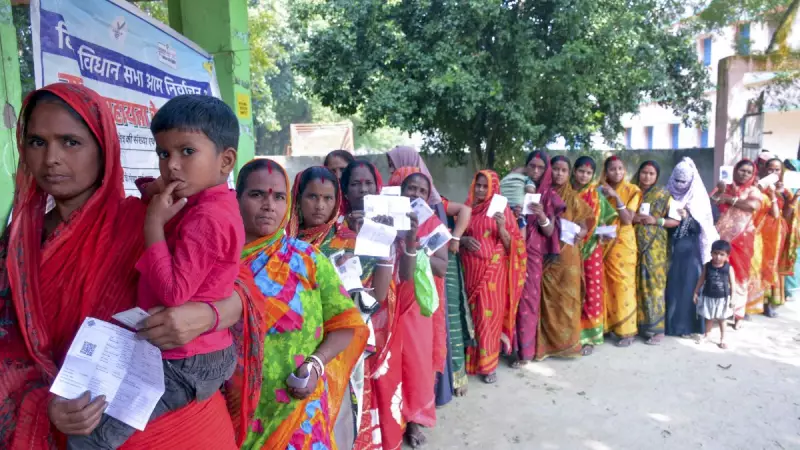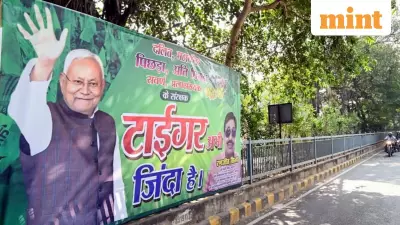
The 2025 Bihar Legislative Assembly elections have marked a significant milestone in the state's political landscape, with women candidates achieving unprecedented success. According to the final results declared on November 15, 2025, female representation witnessed a remarkable 12 percent increase compared to the 2020 assembly polls, signaling a transformative shift in Bihar's political dynamics.
Historic Rise in Women's Political Participation
The election results reveal that women candidates secured significantly more seats across various political parties, with the percentage increase calculated from the baseline of the previous assembly elections. This surge represents one of the most substantial gains for women's political representation in Bihar's recent history. The data clearly indicates that political parties across the spectrum fielded more female candidates, recognizing their growing influence and electoral appeal.
Political analysts have described this development as a watershed moment for gender equality in Bihar politics. The 12 percent rise demonstrates a breaking of traditional barriers that have historically limited women's participation in electoral politics. This trend aligns with broader national movements advocating for greater women's representation in legislative bodies.
Key Winners and Their Constituencies
Among the notable winners is Shreyasi Singh, who clinched victory from the Jamui constituency, continuing her family's political legacy while establishing her own identity as a capable leader. Her campaign focused on youth empowerment and agricultural development, resonating strongly with voters across demographic segments.
From the Patna region, Anamika Kumari emerged victorious in the Patna Sahib constituency, defeating seasoned male politicians with her grassroots campaign strategy. Her victory speech emphasized her commitment to improving educational infrastructure and women's safety in the capital region.
In northern Bihar, Kavita Singh secured a decisive win in the Sitamarhi constituency, focusing her campaign on flood management and agricultural support systems. Her background in social work proved instrumental in connecting with rural voters facing recurring natural disasters.
The Gaya constituency witnessed the triumph of Priya Sharma, who prioritized tourism development and job creation in her electoral platform. Her victory is particularly significant given the traditional conservative leanings of the region.
Factors Behind the Electoral Shift
Several factors contributed to this historic increase in women's electoral success. Increased voter awareness about women's issues, combined with targeted campaigning by women candidates addressing local concerns, played a crucial role in their electoral victories. Political parties also demonstrated greater willingness to allocate winnable seats to female candidates, recognizing their ability to connect with diverse voter bases.
Educational empowerment and greater participation in public life have prepared a new generation of women leaders for electoral politics. Many of the winning candidates possessed strong professional backgrounds in education, social work, and entrepreneurship, which enhanced their credibility among voters seeking effective representation.
The election commission's initiatives to ensure safe and accessible polling for women voters also contributed to this trend. Special measures implemented at polling stations encouraged higher female voter turnout, which subsequently translated into support for women candidates.
Implications for Bihar's Political Future
This significant rise in women's representation is expected to have far-reaching consequences for Bihar's governance and policy priorities. With more women in the legislative assembly, issues like women's health, education, and economic empowerment are likely to receive greater attention in policy discussions and budgetary allocations.
The success of women candidates across party lines suggests that gender may be becoming less of a barrier in Bihar politics, with voters increasingly prioritizing capability and constituency development over traditional identity markers. This trend could inspire more women to enter politics at various levels, from local governance to state leadership positions.
Political scientists predict that this election could mark a turning point in Bihar's political evolution, potentially influencing other states to promote greater gender diversity in their legislative bodies. The performance of these women legislators in the coming assembly sessions will be closely watched as they work to deliver on their campaign promises and address the diverse needs of their constituents.
As Bihar moves forward with its newly elected assembly, the increased presence of women lawmakers promises to bring fresh perspectives to the state's development agenda and governance models, potentially setting new benchmarks for inclusive politics in India.





